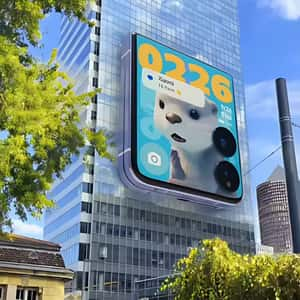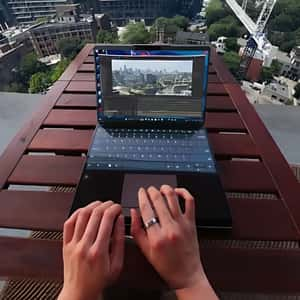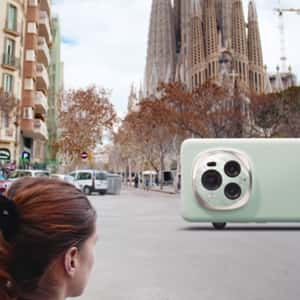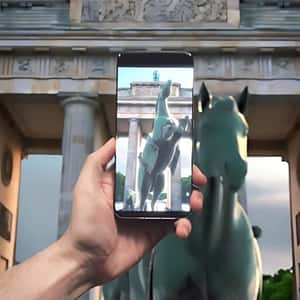The Tools Behind FOOH Part I: Ideation and Concept Development
Effective fake out of home campaigns start with strong FOOH ideation. Find out which tools and techniques work best for your campaign.
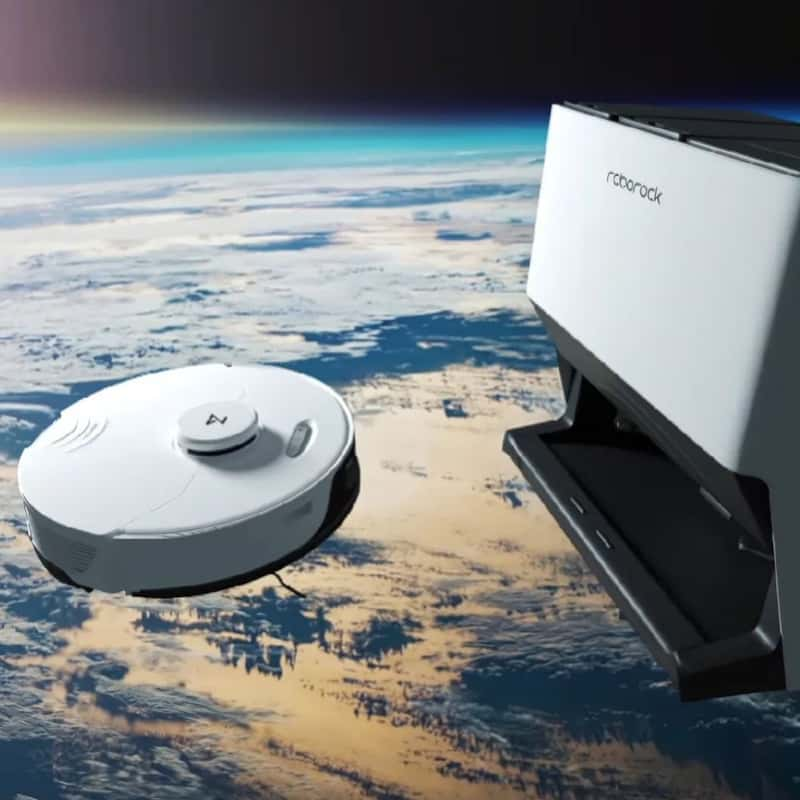
FOOH grabs attention by creatively combining digital effects and the real world. This unique style sets it apart from the constant, repetitive visuals consumers see every day.
But as with any good ad, Fake Out of Home advertising starts with a strong foundation: the FOOH ideation phase.
FOOH ideation is arguably the most exciting stage in creating an FOOH ad. Creativity with a purpose is key. It means connecting ideas to the brand, the audience, and the unique opportunities that FOOH advertising offers.
This first part of the series will guide you through the FOOH ideation process. It will show you how to turn bold ideas into clear, standout concepts. From brainstorming tools to key considerations for concept development, you’ll learn how to create campaigns that are as strategic as they are creative.
Want to know more about Fake Out of Home? Check out our Beginner’s Guide to Fake Out of Home Advertising here.
What Sets FOOH Ideation Apart?
FOOH ideation isn’t just like any other ad ideation process. It requires you to think beyond the usual.
How your elements are going to interact with the surroundings in the real world. How it should feel natural and authentic yet eye-catching. And how it can incite curiosity in your online audiences – and all of this already from the very beginning.
FOOH ideation starts with a clear answer to a question: Why?
What is your goal in creating a FOOH ad?
Are you aiming to increase brand awareness?
Drive engagement? Boost your sales?
Once you know the “why,” you can focus on the “how.”
The magic of FOOH ideation lies in its ability to blend storytelling with innovation. Think of the most memorable ads you’ve seen. They likely didn’t just sell a product; they told a story that stuck with you or tapped into an emotion.
FOOH is not like traditional social media ads. It doesn’t push for a hard sell. Instead, it incites curiosity and builds real connections.
It’s not just about selling a product. It’s about making your ad an experience that’s memorable and shareable.
Ultimately, the goal is to spark curiosity.
When people see something new and surprising in the real world, they want to learn more. They click, share, and engage.
FOOH is all about selling an experience. It’s memorable, shareable, and makes an emotional impact. One that connects deeply with your brand and creates a strong, positive impression on your audience.
7 Tools to Streamline FOOH Ideation
Ideas that come up during the FOOH ideation phase can be clever, silly, or even bad. Regardless of their quality, though, they’re the lifeblood of your FOOH ad. FOOH ideation is where bold ideas come alive.
And the right tools to manage projects can help refine and organize these concepts into actionable plans.
Here are seven key tools for the FOOH ideation phase. They help you organize, visualize, and make the process smoother and more effective:
1. Collaborative brainstorming in FOOH Ideation
Miro: Miro is a strong online whiteboard tool. It helps your team brainstorm together easily during FOOH ideation. This software is a “virtual workspace.” It helps you map ideas, organize thoughts, and connect concepts visually.
This is important, especially for generating new and creative ideas that people haven’t explored yet. This software allows you to work together in real time, so you can stay on the same page with your team and ensure your ideas are in sync. Plus, it’s super easy to move things around and adjust as your ideas evolve. It’s a great way to keep everything organized and make sure no creative idea gets lost in the mix.
FigJam: FigJam is another useful software for real-time collaboration. If you’re trying to figure out how your FOOH ads are going to play out, FigJam is perfect. It’s super interactive and lets you sketch, prototype, and collect feedback as a team, so it’s ideal for visualizing your ideas. Plus, it’s intuitive and allows everyone to contribute to the visual direction of the ad, making it easy to brainstorm bold, creative concepts.
Canva: For FOOH ideation, Canva is a powerful tool that goes beyond design. It also offers a whiteboard functionality like Miro perfect for brainstorming sessions.
Teams can collaborate in real time, map out ideas visually, and organize concepts into a structured framework. What makes Canva especially useful is its seamless integration with presentation tools. You can smoothly convert your brainstorming results into polished presentations right in the same app. This saves you from the trouble of switching between different platforms.
This dual and versatile functionality keeps things smooth and efficient. Your team can focus on refining ideas and visualizing the concept, all in one spot.
2. Idea generation in FOOH Ideation
ChatGPT: When you’re stuck in the FOOH ideation process, don’t worry. Tools like ChatGPT can be your brainstorming buddy. It might not always come up with the perfect idea, but it’s excellent at sparking the perfect idea within you.
Whether you need unique CGI animation concepts, out-of-the-box narratives, or ways to surprise your audience, ChatGPT helps push your creative process forward.

Paired with AI image generation tools, it can also help you visualize your ideas quickly. These tools help you play with lighting, colors, and vibes. They give you a better idea of what works before you start detailed design work.
Also, these AI images can guide the post-production process. This is especially helpful if the client shares feedback on a specific image they love.
Keep in mind: ChatGPT and its AI companions don’t replace creativity. They boost it, helping you sharpen your best ideas and keep the workflow smooth.
Jasper: Jasper is another AI-powered tool perfect for helping you write polished campaign concepts and deliverables, while focusing on the key theme of your FOOH ad. Jasper works great when you need sharp, engaging ad copy or ideas that stand out. During the ideation phase, it helps refine your vision and ensures your ideas are cohesive, innovative, and audience-focused.
Still feeling stuck? Here are a few brainstorming techniques to keep in mind:
- Mind Mapping: Start with one central idea and branch out with related concepts. This helps you find links between themes, settings, or emotions you want to show. Tools like Canva offer ready-made templates for mind maps, making it easy to organize your thoughts visually.
- SCAMPER: Think about how you can Substitute, Combine, Adapt, Modify, Put to another use, Eliminate, or Reverse elements of a current ad or concept. This approach can help break down barriers and push your thinking in new directions.
- Random Word Association: Pick random words and challenge yourself to tie them into your FOOH ad. It can lead to unexpected, creative combinations that make your campaign stand out.
- Role Reversal: Look at the ad from the perspective of the audience or even the product itself. What would the ad look like if you were the target demographic or the item being advertised?
If you’re looking for even more brainstorming tools to spark creativity, check out Zapier’s list of brainstorming tools to help you find the right platform to fit your creative process.
3. Mood boards and storytelling in FOOH Ideation
Canva has many easy-to-use templates. You can quickly create mood boards, presentations, and visuals to show how your faux ooh ad will appear. Their drag-and-drop tools let you try different elements easily. This helps you find the perfect look.
You can share your ideas visually, so your team sees exactly how you want the ad to feel. It’s a simple, effective way to bring your ideas to life without needing advanced design skills.
Pinterest is a place to find visual ideas. You can use it to shape your campaign’s vibe. Pinterest has everything you need. Whether you want color schemes, CGI examples, or inspiration for your FOOH ad, you’ll find it here.
You can make boards for different parts of the campaign. For example, you can focus on the aesthetic, how CGI blends with real footage, or even the actors’ outfits.
This website is key for setting the tone. It also helps you gather ideas to guide your storytelling from beginning to end.
5 Key Considerations During FOOH Ideation
In your FOOH ideation process, a few key factors can determine if your campaign succeeds or fails. Here are five key considerations to keep in mind:
1. Target audience
Think about who your ad is for before considering the logistics. Focus on where you’ll film and what the CGI will look like later. The audience should come first.
To make your FOOH campaign resonate, understand what your audience likes. Know their habits and the content they enjoy.
Ask yourself: Are they on TikTok for quick, funny clips? Or do they prefer bold, creative videos on Instagram?
Knowing what grabs their attention will help shape everything about your ad, from its tone and visuals to where and how it’s shared. Without this foundation, even the most visually stunning ad can fall flat.
2. Brand alignment
During your FOOH ideation, it’s crucial to ensure that your concept aligns with your brand’s voice, message, and overall identity. An ad that feels out of character can confuse your audience or even dilute your brand image. Ask yourself: Does this concept reinforce what the brand stands for? Does it resonate with the emotions or values the brand wants to evoke?
If your brand makes sleek cars with advanced technology, your FOOH ad should show that sophistication. A crazy display of a car sitting in a giant grocery cart being pushed through a mall? Totally unexpected, but it screams luxury in a way that’s impossible to ignore.
If you’re a beauty brand that’s all about being bold and creative, imagine a massive rollercoaster makeup snaking through a city. These ads grab attention and show the brand’s personality. They also share values that connect with the audience.
Check out even more great FOOH Ad examples in the biggest existing FOOH CGI Ads Library below.
3. Platform suitability
When planning your FOOH ad, you’ve got to think about how it’ll look and feel on social media platforms. A FOOH ad that blows up on TikTok might not have the same effect on Instagram Stories or YouTube ads and vice versa.
FOOH differs from out-of-home marketing. Out-of-home uses physical locations and ads based on where you are, but FOOH is strictly digital.
This means your ads will exist in entirely different spaces, and each platform has its own vibe, audience, and style of communication, so adjusting during the FOOH ideation process is key to making sure it lands the way you want.
For example, TikTok is all about new and fresh content that feels authentic and hasn’t been recycled from other platforms. People scroll fast, so your ad needs to hook them immediately while fitting into TikTok’s casual, creative vibe.
What might work for TikTok- like short or snappy content – won’t necessarily translate to Instagram or Youtube. So during FOOH ideation, think of creating an ad that feels natural for each or for one space while keeping the original idea’s energy and creativity intact.
Don’t forget about the little details, either – like avoiding “no-go zones.” For example, make sure important text or visuals aren’t covered up by platform buttons like “like,” “comment,” or “share.” These details might seem small, but they can make or break how your ad performs once it’s shared.
4. Virality potential
FOOH ads naturally have an edge when it comes to organic virality. If you’ve ever seen a FOOH ad posted by a brand, chances are it got way more engagement than their usual content.
These ads stand out because they offer a wild break from the usual fluff posted online. So, when you’re brainstorming ideas for your FOOH campaign, think about ways to make it unforgettable. Focus on elements that spark curiosity, laughter, or even a sense of awe.
Elements that stop people mid-scroll, like gigantic products or hyperrealistic CGI interactions with the real world, can really grab attention. It’s about creating something that resonates with your audience in a way that makes them feel connected.
Is your ad funny? Is it unexpected?
Does it surprise people with something they haven’t seen before?
If you can nail that balance between creativity and relatability, your FOOH ad can have a much higher chance of going viral. And once it starts getting shared, it snowballs.
Clients often aim for the ultimate question from their audience: Is it real or not?
5. Market and competitive analysis
Keeping up with industry trends is key when you’re in the FOOH ideation process. Drawing inspiration from existing ideas also helps. One of the best ways to get started with your FOOH is by checking out already existing successful campaigns.
Look at the campaigns that have really taken off and think about what made them work. Was it the visuals, the messaging, or the way they executed the idea? Understanding these elements can give you a better sense of how to create something that stands out.
Our library of FOOH examples is a great place to get your creative juices flowing. You’ll find a wide range of ads, from ones that go all out with CGI to ones that take a more subtle approach. Each example comes with an FOOH Impact Score (FIS), an engagement metric that evaluates the performance of each ad. This score is calculated using a formula that combines key indicators such as viewership, engagement rate, reach, and other performance metrics.
But remember; it’s not just about looking at successful ads, you also need to keep an eye on your competitors. Seeing what others in your industry are doing (or not doing) can give you valuable insights into where the market is heading and help you refine your own strategy. For example, if you notice a gap in the types of FOOH campaigns being done, that could be your opportunity to create something unique that sets you apart.
How to Turn FOOH Ideas into Actionable Concepts
To turn your FOOH ideas into action, you need a clear plan. A structured approach will help bring those creative ideas to life.
It’s not enough to just come up with cool concepts; you need to develop them into concrete, workable campaigns. Here are five essential steps to guide you from idea to execution:
1. Develop a storyboard or rough sketches
The process kicks off with a brainstorming session between your team and everyone involved in creating the FOOH ad. This meeting is all about getting on the same page. This is when you clarify the project’s goals, understand the vision, and outline what is needed to make it work.
Together, you’ll go over briefing materials, share ideas, and do some quick research to help shape the direction of the campaign. Whether you brainstorm as a group or break into smaller teams, the goal is to land on a concept that feels exciting and has real potential to move forward.
Once the foundation is set, it’s time to sketch out the visuals. You and your team can create a storyboard using Canva, Figma, or Keynote. If you prefer, you can also use pen and paper to help you capture the ad’s tone and flow. For those who like working digitally, apps like ProCreate on an iPad are a great way to refine your ideas.
This step is all about getting a tangible draft that brings the concept to life and sets the stage for the next phase of planning.
AI tools like DALL·E or MidJourney can quickly generate polished mockups, offering inspiration for your FOOH campaign. However, use them cautiously. They may not reflect realistic scenarios and could mislead clients if presented as final concepts.
New tools like Google Whisk push AI workflows ahead. They make storyboarding and visualization easier and more collaborative. And while still evolving, tools like Whisk hint at the future of creative planning.
Mix traditional methods with new technologies to craft a storyboard. This balance boosts creativity and keeps your campaign practical.
2. Outline key elements
Once you’ve sketched out your storyboard, it’s time to get into the nitty-gritty details that will make your FOOH ad pop. Since everything relies on CGI, you’ll need to figure out how digital effects will bring your concept to life.
Is the ad playing with scale, creating larger-than-life products that feel surreal? Or are you focusing on subtle interactions with the real-world setting?
This is where you start refining the theme of your ad and making sure it all ties back to your original idea.
Using mood boards along with your storyboard can be a game changer. They help everyone – your team, clients, or whoever’s involved – get a clearer picture of what the ad will actually look and feel like. It’s way easier to get people on board when they can see your color schemes, design inspiration, and aesthetic all in one place.
Don’t forget about the technical stuff, either. Things like shadows, reflections, and lighting can make or break how realistic your CGI looks.
For example, if your ad is set in Paris and it’s meant to feel romantic, your lighting should reflect that dreamy, golden-hour vibe the city is known for. Getting these details right will make your concept feel more polished and ready to move forward.
3. Check doability
Once your concept is looking solid, it’s time to turn your attention to the logistics. Where is the ad going to be filmed? When can you shoot?
FOOH ads are typically shot in public spaces. Rhat means you need to make sure you can actually get the necessary permits for the locations you want to use. Certain architectural landmarks might have restrictions, and you’ll need to confirm that you’re allowed to feature them in your footage.
This step is crucial to making sure that your creative vision is possible in the real world. You also want to make sure you’re not overlooking any legal or cultural considerations.
Filming in locations that are culturally or historically important can be challenging. It’s crucial to approach these sites with care and respect. That’s why it’s really important to work with a team or studio that’s experienced in navigating these types of challenges.
They’ll make sure you’re following all the legal protocols and can even help with research to ensure your shoot is culturally sensitive. The last thing you want is to inadvertently offend anyone or run into legal issues down the line.
4. Test initial concepts
Before jumping into full production, it’s super important to test your ideas with a small group of people. Whether it’s colleagues, focus groups, or even just friends, getting some fresh eyes on your concept can give you a better sense of how it lands.
Is the message clear? Does it grab their attention?
Sometimes, a great idea on paper doesn’t work out as planned. This feedback step can help you avoid investing in something that misses the mark.
This is also why clear communication and feedback during the FOOH ideation process are so important. You don’t want to find yourself making endless revisions. They’re expensive, time-consuming, and can quickly eat into your campaign’s timeline and budget.
Plus, if you’re working on a tight schedule for a marketing campaign, you probably won’t have the luxury to keep tweaking things until they’re perfect. Testing concepts is important, but the key is to refine them early with your team’s input so that by the time you start production, you’re confident you’ve got a winning idea.
Getting everyone on the same page early helps you make good choices. This way, you follow the plan and avoid wasting time or money.
5. Technical feasibility
At this stage, it’s crucial to loop in your technical teams early on to make sure your concept is achievable within your time and budget constraints. The timeline for creating a Fake Out of Home (FOOH) ad varies widely. It largely depends on the product’s complexity and the resources needed to produce it.
Many factors affect the final budget and timeline. These include the complexity of 3D elements, animations, and simulations. The time for location scouting and securing permits also matters. Even the actors involved can influence costs and schedules.
To evaluate the feasibility of your concept, industry-standard software is critical. Cinema 4D, known for its advanced capabilities in 3D modeling and animation, is a popular choice for studios with a budget to invest in high-end tools. On the other hand, Blender offers a versatile, free alternative that has become increasingly popular among artists and smaller studios for its robust features in 3D design and animation.
For real-time rendering and immersive visuals, Unreal Engine stands out as a leader, making it ideal for crafting hyper-realistic environments. When it comes to motion tracking and compositing, Adobe After Effects is a go-to tool, while Nuke is perfect for those seeking advanced compositing and post-production capabilities.
Testing your concept’s visuals early on helps you spot challenges. It also makes sure the project matches your vision. Tackling technical issues at the start cuts risks and keeps the project moving forward. It also lays a strong groundwork for an easy production process. This applies whether you use top-tier tools or free, accessible options.
FOOH Ideation In Your Campaign
A good ad is only as good as the ideas it was born from. The FOOH ideation phase goes beyond brainstorming. It’s about creating ideas that fit a brand’s identity. These concepts should engage your audience and pave the way for memorable, shareable experiences.
With the tools and techniques outlined here, you have everything you need to start developing innovative ideas that grab attention and spark engagement.
The next step? Bringing those ideas to life with the right technology and execution. In Part II, we’ll explore the production and execution of FOOH campaigns. We’ll discuss the tools, techniques, and best practices that can transform your creative ideas into effective ads.
Stay tuned and subscribe to our blog or newsletter for all the latest updates and insights on Fake Out of Home and how it’s slowly transforming the advertising industry this 2025.
